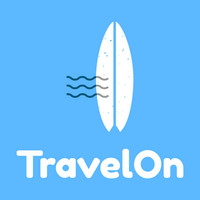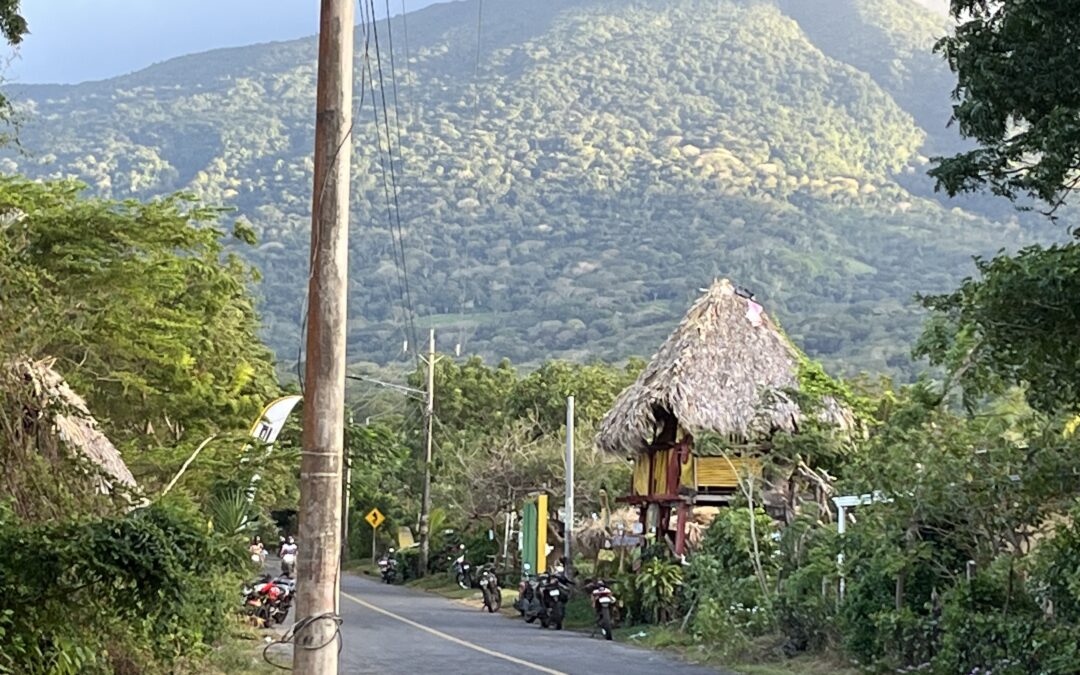Mark Twain in Ometepe Island
I blink and Christmas week is over. I stand outside Dreamsea surf camp’s front gate. I’ll cut across Nicaragua’s 12-mile beltline that separates the Pacific Ocean and Lake Nicaragua. I’ll dog leg six miles to depart Port of San Jorge Ferry Terminal to Ometepe Island in Lake Managua.
I come to know what travelers mean by Nicaragua not having a tourism infrastructure. Unless you are staying at a luxury hotel, expect to take cold showers. Many of the hotels, hostels and restaurants are closed. English explanations at sights or marked signs on hiking trails are rare. I rely on my lodging hosts to book my day tours. Christopher Cooper’s four A’s of tourism is a fitting construct for assessing Nicaragua’s tourism infrastructure: accommodation, access, amenities and attractions.
Nicaragua’s transport network is comprised of independently owned, decommissioned and refurbished US school buses known as chicken buses. Passengers, livestock and horticulture share the buses. Back to the four A’s access and accommodation. An internet search yields no bus instructions, schedule or fare information. I learn that a bus will pass the front gate by asking Dreamsea’s concierge. Passengers wave the bus down and alert the driver to disembark. A driver and money man are standard. English speakers are rare. I ascertain the fare by watching what the money man collects from the other passengers.
Chicken bus food accommodation is distinctive and satisfying. Hawkers board along the route. Offerings tick all the boxes for local and mouthwatering. Warm pineapple in fried corn dough soaked in honey. Fleshy sweet-sour jacote fruit. Fried chicken. Candies. Ice cream. Peanuts. Cold soda. Transport is chaotic and congested and I would take it over Eurostar’s first-class train car from London to Paris any day.
I’m forewarned Rivas terminal is sketchy. Before the bus is at full stop a passenger grabs my backpack from the overhead rack, passing it to one of the cab drivers waiting outside the bus door. I pursue the cabbie in possession of my backpack to his vehicle. The quoted fare is revealed as based on total occupancy of four passengers, thus quadrupling my private fare. Confrontation isn’t worth the sum in dispute. I exit the cab on the first round of negotiation but compromise in round two. I want out of Rivas terminal.
The jaunt to Port of San Jorge Terminal disperses Rivas Terminal’s bedlam like wind scattering fog. Families enroute to New Year’s celebrations wait patiently to board the ferry. Dark waves lap the sedimentary rock shoreline. In the distance, majestic Ometepe Island rises from the glittering metallic water. Two towering volcanos dominate the skyline.
“I thought of suicide, pretended illness, flight …. I was very miserable and scared.” – Mark Twain reminisced of his first lecture. After completing this first lecture tour in 1866, Twain needed to get from California to New York for a job. Having journeyed the Over Land trail of the American West, he opted for the safer and faster passage out of San Francisco by sea through Nicaragua, a 20-mile stagecoach trip to Lake Nicaragua, to the river Port of San Carlos where the vast lake empties out to the Caribbean via the San Juan River.
Mark Twain’s pilot and navigation know-how up and down the Mississippi River made him a natural fit for adventure travel writing. As every American that took high school literature knows, he was fascinated by waterways. I’m as enthralled by the wildness and freedom of Lake Nicaragua as Twain was along his approach to Ometepe Island in 1866: “Two magnificent pyramids, clad in the softest and richest green, all flecked with shadow and sunshine, whose summits pierce the billowy clouds.”
The steely waves of Lago de Nicaragua splash the eastern shore below my window. This unique locality offers kayaking along dark beaches, coffee farms to discover and pictographs to explore. I’m under the weather and there is no better place to recover than Ometepe Island. Island streets double-duty as sidewalks shared by horses, dogs, cows, pigs and distracted tourists. When I consider getting out of a hammock, my hostess, Linda, talks me out of renting a scooter. I walk across the road to Coco’s hostel and restaurant where I am welcomed like family. Nicaraguan coffee’s complex taste and unique notes vary across regions. Here it’s mildly citrusy and light bodied.
As I cross the road to return to my hammock and book, I encounter surf camp friends who delighted in Ojo de Agua natural spring, San Ramon waterfall and Volcano Conception. I’m content in Twain’s Ometepe Island dream world. After nearly two weeks of travel abroad a steamship from California, Twain wrote: “bright green hills never looked so welcome, so enchanting, so altogether lovely.” This is an authentic backwater. The roads are rough and the only access is by ferry. The feel of the place is remote. Feliz Ano Nuevo.

